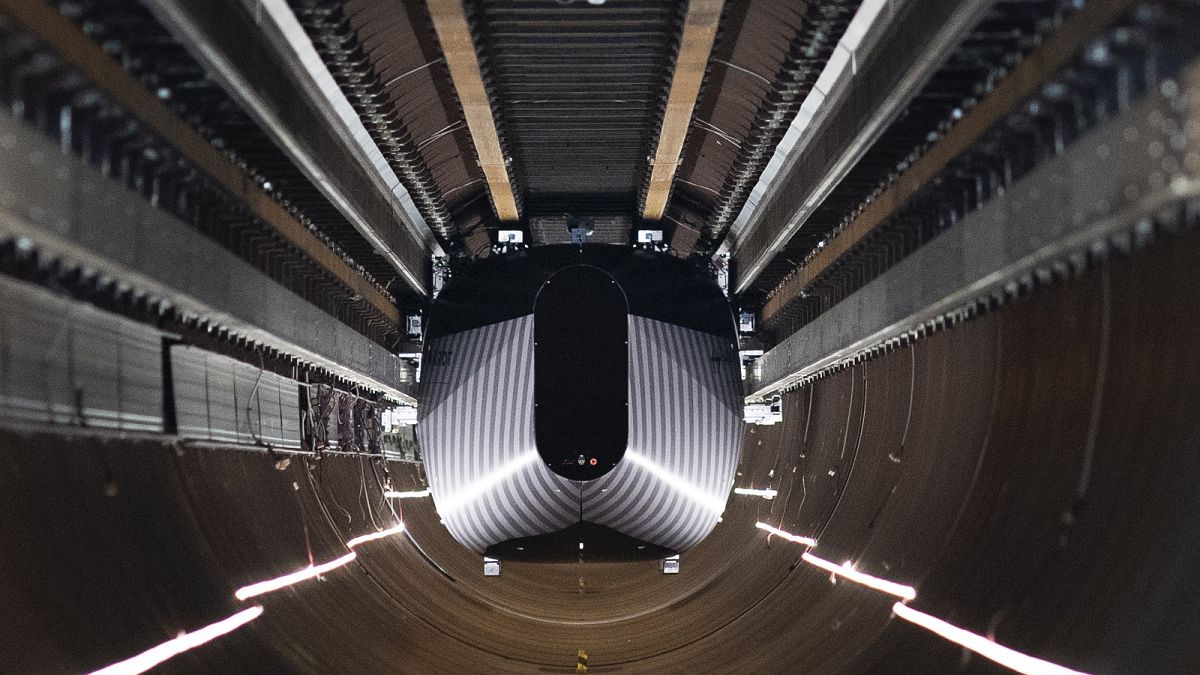Hardt says it had a successful first test of its hyperloop prototype at its test centre in the Netherlands.
Imagine commuting in a capsule blasted through a pipe as hurtles along on magnetic fields at speeds of up to 700 km/h.
Dutch company Hardt says it has taken a step towards making that a reality with a successful test of the futuristic mode of travel.
“Today, with the first successful test, we were able to levitate the vehicle, also turn on the guidance system and the propulsion system,” Marinus van der Meijs, the technology and engineering director of Hardt, said.
“Then we move the vehicle to our launch position about 20 metres into the tube. And then we launched it with an acceleration similar to that of a metro [train], up to a top speed of about 30 km/h, about 100 m in the pipe. And that’s when we reached a successful test,” van der Meijs added.
The test was conducted at Hardt’s test centre in the Netherlands which consists of a 420-metre tube made up of 34 separate sections.
A vacuum pump sucks out the air to reduce the internal pressure. That reduces drag and allows capsules to travel at high speeds.
Replacing short-haul flights
While the speed has been modest in the limited space offered by the test centre, the Dutch company aims to increase its speed up to 700 km/h.
The idea of the hyperloop was first conceived by tech mogul Elon Musk more than a decade ago, when he suggested it could shuttle passengers the nearly 645 km between Los Angeles and San Francisco in 30 minutes.
The distance between Paris and Amsterdam is approximately 500 km when travelling by road. The travel time by car is typically around 5 to 6 hours.
Teams around the world have been working on the idea since Musk’s suggestion, but there is not yet a commercially viable hyperloop system.
Its backers say it is far more efficient than short-haul flights, high-speed rail and freight trucks, but it will involve significant investment in infrastructure.
“To deliver [the Hardt] Hyperloop as a mobility system, we have a very complicated puzzle which requires technology, which requires policy, which requires public-private collaboration, and that is what is needed most,” Roel van de Pas, Commercial director of Hardt, said.
Getting the technology to this point has not been easy, according to the company.
“The most difficult things that we are doing now is to test all of these functions together. Levitation, propulsion, guidance, all of those functions we are now capable of executing as an orchestra, making them work together,” said Van de Pas.
Hardt says its hyperloop will be ready for passenger operations by 2030.
For more on this story, watch the video in the media player above.
Video editor • Roselyne Min

